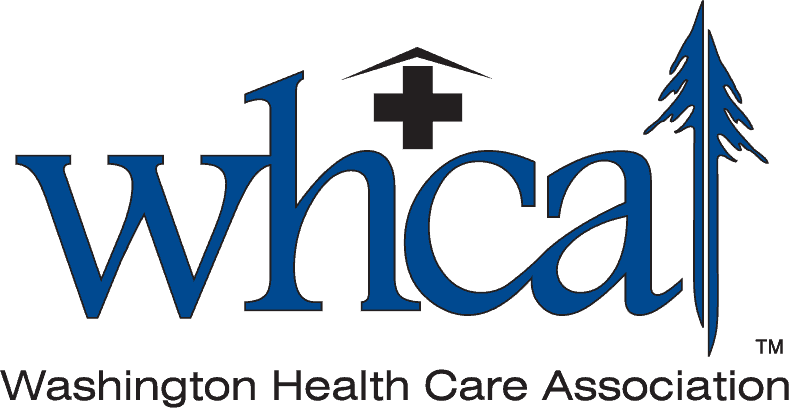The Federal COVID-19 Public Health Emergency (PHE) ended April 10 at midnight. This means the Health Emergency Labor Standards Act (HELSA) is no longer in effect.
COVID-19 Guidance in the Workplace
This changes COVID-19 requirements for most employers in the group.
- Employers with 50 or more employees on site no longer have to track positive employee COVID tests for the purposes of reporting an outbreak to L&I. This does not alter any requirement to test or track this information for other purposes (such as DOH or DSHS requirements).
- Employers must still record COVID cases on their OSHA 300 log if they meet the recording criteria. This has not changed. They must still report any employee death or hospitalization for treatment – including for COVID if the employee contracted COVID at work – to DOSH within 8 hours of occurrence or employer knowledge.
- Effective PPE – including masks or respirators as required – is still mandated. L&I will continue to utilize DOH and CDC guidance to rule when PPE is required in relation to COVID and other illnesses/pathogens.
- Employees still have the right to request to voluntarily wear PPE, but employers are no longer mandated to allow the request. (It is still recommended these requests be authorized when possible, so employees feel safer while at work.)
- Employers are no longer required to inform employees of past exposure to COVID. While HELSA was in effect if the employer gained knowledge that employees had been exposed to COVID they were required to tell affected employees within 24 hours. This is no longer required.
- Employers are still required to inform employees of the hazards they may face. This includes informing employees if there is a COVID-positive resident in the building who they may have close contact with.
COVID-19 Claim Allowance
This also changes how L&I looks at claims after April 10. Now, the date of exposure matters.
- Pre-04/10/23: There is presumptive coverage for exposure and contraction.
- 04/11/23 and later: For allowance, a worker has to have contracted Covid-19 (verified by a positive test) from an employer-corroborated exposure at work (they have to pinpoint the exposure event). Exposure-only claims are denied.
Allowance Details
- L&I will determine whether the worker had a greater likelihood (higher risk) of contracting the disease because of job duties. There may not be as many of these as community exposure is higher now than during the emergency.
- Appropriate, medically required testing would also be covered (see below). This is a time-limited benefit, and no benefits would be paid after the worker tests negative for COVID-19 or the quarantine period has ended, unless the worker develops the disease.
- The employer has to corroborate specific exposure at work. If there was none, the department will reject the claim.
- Exposure does not require quarantine.
Requirements for COVID Testing
Testing must meet the WACs (296-14-340 for frontline workers and 296-14-341) for healthcare workers. (The WACs are provided in the Resources section below.)
L&I can accept a test result from:
- The employer if they administer the test and record the date and result
- A pharmacy
- A county health department or another temporary testing facility
- Other commercial locations that are providing testing
L&I accepts both a Rapid Antigen Test (RAT) and a Polymerase Chain Reaction (PCR) test for verification that you have contracted COVID-19.
Impact on Employer’s Rates and Refunds
Allowed claims with dates of injury on or after July 1, 2023, will impact the employer’s rates and retro performance. Rates are impacted starting in 2026 and Retro performance impact starts at the 2025 Retro adjustment. Based on this, we would recommend that you begin KOS for allowed Covid-19 claims for dates of injury on or after July 1, 2023.
Resources
WAC 296-14-340
Frontline workers—verification for contraction of an infectious or contagious disease that is the subject of a public health emergency—RCW 51.32.181.
- Verification that an infectious or contagious disease has been contracted requires written documentation of:
- A diagnosis from a medical provider made by examination; or
- A positive test administered or verified by a medical facility, testing facility, pharmacy, or the employer’s facility.
- The following cannot be used as verification that a worker has contracted an infectious or contagious disease:
- Symptoms only self-reported by the worker; or
- A report from a medical provider that solely relies on a worker’s self-reported positive test results.
WAC 296-14-341
Healthcare workers—verification for contraction or quarantine due to an infectious or contagious disease that is the subject of a public health emergency—RCW 51.32.390.
- Verification that an infectious or contagious disease has been contracted requires written documentation of:
- A diagnosis from a medical provider made by examination; or
- A positive test administered or verified by a medical facility, testing facility, pharmacy, or the employer’s facility.
- The following cannot be used as verification that a worker has contracted an infectious or contagious disease:
- Symptoms only self-reported by the worker; or
- A report from a medical provider that solely relies on a worker’s self-reported positive test results.
- Verification that a worker has been quarantined due to exposure to the infectious or contagious disease that is the subject of a public health emergency requires written documentation of:
- A medical provider or public health official indicating the worker should remain away from work for a period of time after exposure; or
- Confirmation from the employer that they asked the worker to remain away from work for a period of time after exposure.
- Quarantine does not include:
- Self-quarantine by a worker without direction from a medical provider, public health official, or employer;
- Quarantine without exposure; or
- Quarantine after exposure for a length of time exceeding accepted public safety and health guidelines at the time of quarantine, from the relevant agencies.
[Statutory Authority: RCW 51.04.020, 51.32.181, and 51.32.390. WSR 23-06-062, § 296-14-341, filed 2/28/23, effective 3/31/23.]
ESSB 5217
Work-Related Musculoskeletal Injuries and Disorders – Rulemaking
- Authorizes L&I to adopt rules to prevent MSDs for any industry that has had twice the state average rate of MSDs in a recent five-year period.
- There are limits on how many sets of rules may be adopted in a 12-month period (one set).
- There are limits on how broad the industry classification can be. For example, if they are making rules for the 3-digit NAICS industry classification all 4- and 5-digit subclasses that don’t meet the required threshold of twice the state average rate of MSDs over the 5-year period are exempted.
- Requires L&I to consider trends when determining if rulemaking will occur for an industry.
- Requires alternative control methods (encouraging performance standards as opposed to prescriptive ones).
- Authorizes L&I to provide funds to employers to come into compliance with new rulemaking.
- Requires L&I to publish a list of industries and risk classifications eligible for rulemaking.
- Requires industries with a trend that suggests they will have a rate lower than twice the state average in the next three years to be noted.
The five-year period they will look at includes compensable claims from the five-calendar-year period that ended two calendar years before the published report period. E.g., the first report is likely to come by November 2023, so it would include claims from the calendar years 2017 – 2021.

